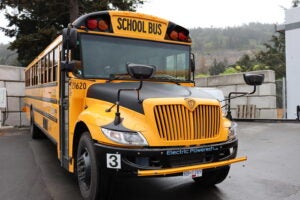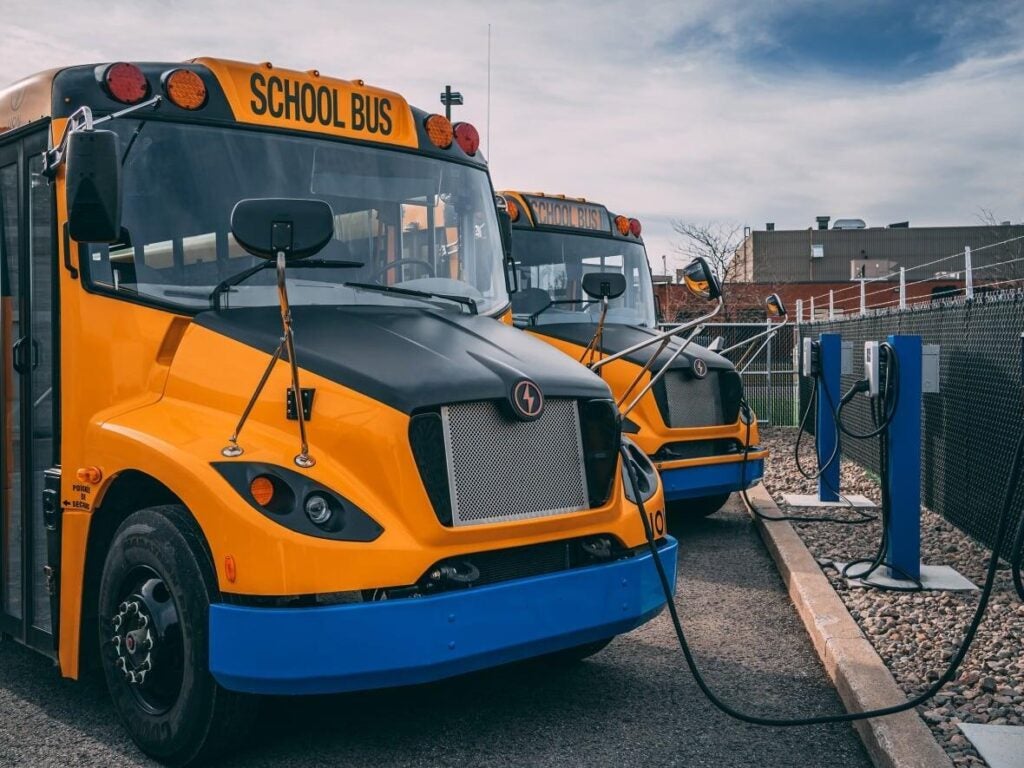- GM supports emergency response with electric vans: General Motors donated their Chevy BrightDrop electric vans to the American Red Cross to enhance emergency response operations nationwide and advance the organization’s Community Adaptation Program.
- Electric vehicle adoption expands across sectors: San Diego introduced four zero-emission electric patch trucks to improve road maintenance, while Janus Electric launched its first U.S. pilot with two Class 8 battery-swapping trucks for Ability Trimodal Transportation Services in Southern California.
Energy Exchange
September 2025: Electric trucks, buses round-up
Posted in Electric Vehicles Comments are closed
August 2025: Electric trucks, buses round-up
- August saw several sustainability milestones, including 25 electric school buses added to the Little Rock School District fleet, 14 new electric transit buses for Vine Transit in Napa County and Chicago launching its first two electric garbage trucks with Republic Services.
- Initiatives were backed by federal and EPA funding, and aim to reduce emissions, improve air quality and lower operating costs, while supporting long-term goals for zero-emission fleets in schools, public transit and waste management.
Posted in Electric Vehicles Comments are closed
The National Electric Vehicle Infrastructure Program is back on the road
- After being illegally withheld, the NEVI program is again moving forward but DOT’s inadequate provisional guidance will not support effective and successful charger deployment.
- EDF recommends that as states resubmit and deploy their plans, they lean into the previous administration’s stronger guidance wherever feasible and legally possible.
Posted in Electric Vehicles Comments are closed
July 2025: Electric trucks, buses round-up

- Fleets across sectors are embracing electrification, with organizations like Pitt Ohio, Fast Lane Transportation, and the Cary Fire Department adding electric trucks and emergency vehicles to reduce emissions and improve sustainability.
- Major public initiatives are underway, including the Harrisburg School District launching the region’s largest electric school bus fleet and the Northwest Seaport Alliance deploying electric drayage trucks and a charging hub near SeaTac Airport.
- Supportive infrastructure and funding are key drivers, with EPA grants, strategic contracts, and charging infrastructure enabling widespread adoption of zero-emission vehicles.
Posted in Electric Vehicles Comments are closed
Businesses across the U.S. continue rolling out electric trucks, buses
- In April 2025, several major zero-emission deployments were announced. HelloFresh added 70 Rivian electric vans, Benore Logistics integrated 14 Hyundai hydrogen trucks, and the city of Roseville purchased 12 electric transit vans, showcasing strong momentum for medium- and heavy-duty electric and hydrogen vehicle adoption across the U.S.
- Transit agencies across the U.S. continue to introduce zero-emission solutions to their operations, including a mix of electric and hydrogen fueled buses and vans being deployed in South Carolina and California in April.
Posted in Electric Vehicles Comments are closed
Southern California’s novel warehouse rule is reducing truck pollution
A new report from South Coast Air Quality Management District shows the District’s groundbreaking warehouse Indirect Source Rule is catalyzing hundreds of zero-emission truck acquisitions and, as result, reducing hundreds of tons of health-harming nitrogen oxide and small particulate matter pollution.
Posted in Electric Vehicles Comments are closed














